-
-
After completing secondary schooling, he enrolled at the University of Bologna, where he graduated in Economics and Business Administration. During this period he staged some theatrical works for a student company and frequented a literary circle animated by the future academic Lanfranco Caretti and the young writer Giorgio Bassani, with whom he shared a passion for tennis. His first professional contacts with cinema were in the field of criticism, as evidenced by his reviews of Italian and foreign films published regularly between 1936 and 1940 in the “Corriere Padano”, an important cultural journal founded by Italo Balbo in 1925.
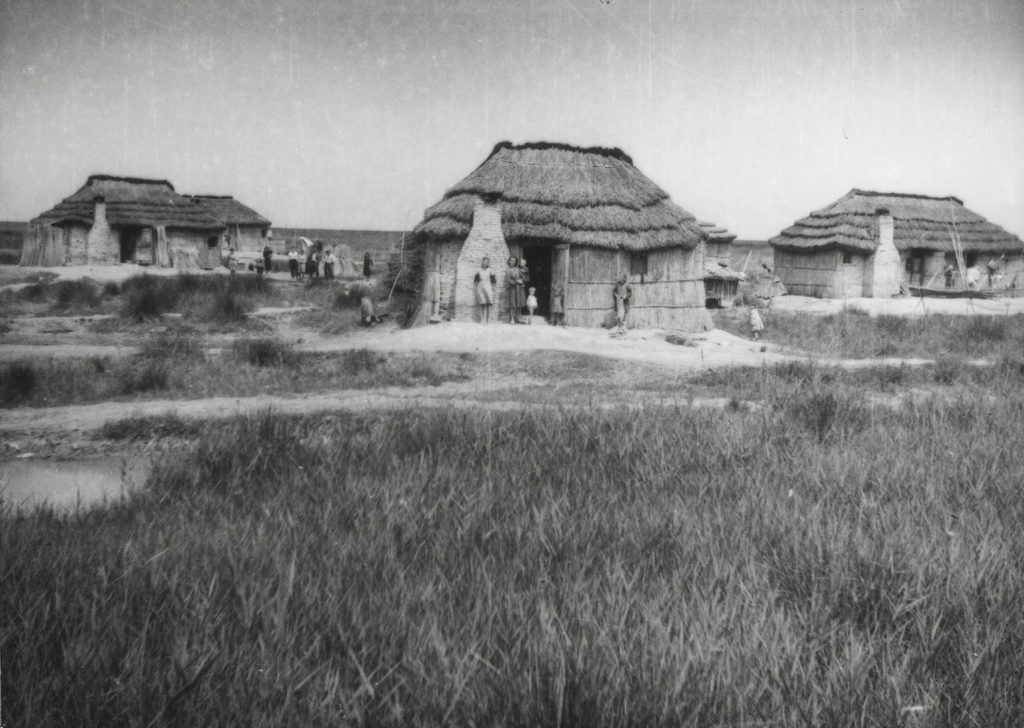
In 1940 Antonioni moved to Rome, where he attended the Centro Sperimentale di Cinematografia and began to contribute to the prestigious magazine “Cinema”, in which he published the article Per un film sul fiume Po, foreshadowing his upcoming debut as a filmmaker. During a brief stay in France, he served as assistant to the director Marcel Carné on the film The Devil's Envoys (1942), but was forced to return to Italy by the outbreak of World War II. In 1943 he returned to Ferrara, where Luchino Visconti was filming Obsession, to start making a first short film, the documentary Gente del Po. Filming was interrupted by wartime events and it would only be screened in 1947.
From his early period, the archive preserves Antonioni’s tennis racquet, a sheet with the results of a tournament won on an unspecified date at the Tennis Club Marfisa in Ferrara and a copy, with dedication, of the short stories Una città di pianura (1940), Bassani’s earliest work, published under the pseudonym Giacomo Marchi. From his years as a film critic date some of the postcards depicting male and female movie stars that Antonioni collected.
After the war, like many first-time directors, Antonioni learnt the ropes by making documentaries, directing a number of short films, notable among them N.U. Nettezza urbana (1948) and L’amorosa menzogna (1949), before attempting a feature film with Cronaca di un amore (Story of a Love Affair, 1950). Although the presence of the actor Massimo Girotti and the choice of a plot centred on the theme of the criminal couple were an explicit homage to Visconti’s Obsession, in this debut film was already apparent a detaching from the neorealist tradition, evident in the choice of an upper-bourgeois setting, the geometrization of space and the adoption of elaborate filming techniques like use of sequence shots.
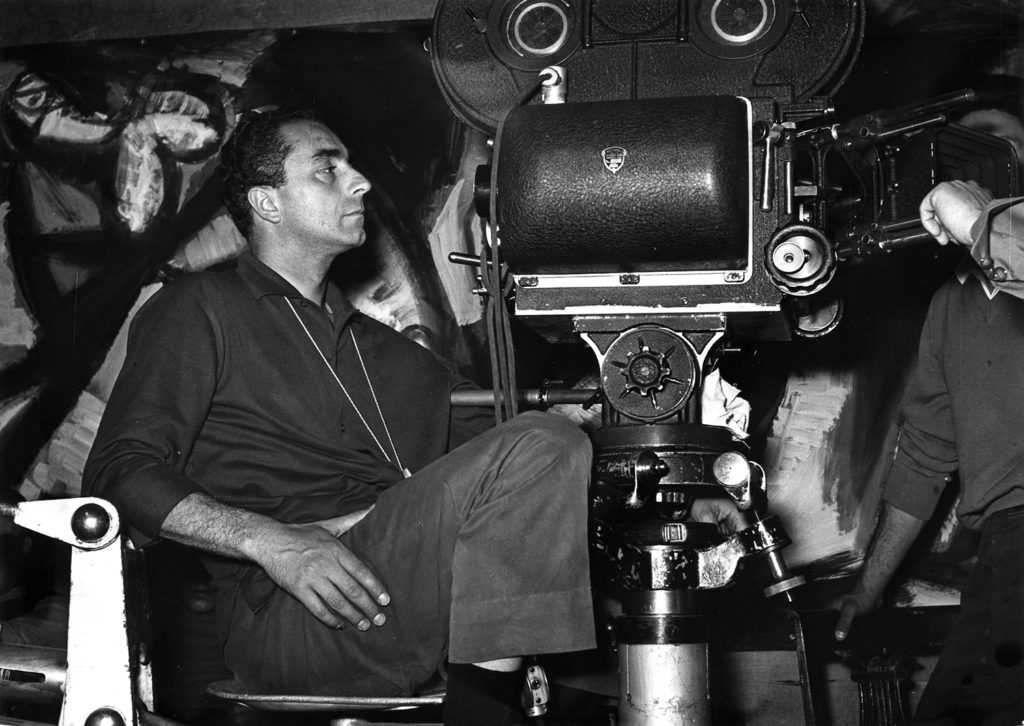
After his misadventures with the production and censorship of the juvenile crime triptych I vinti (The Vanquished, 1952) and the failure of the drama set in the movie world La signora senza camelie (The Lady Without Camellias, 1953), Antonioni’s poetics began to take on a more precise shape with Le amiche (The Girlfriends, 1955), an adaptation of Cesare Pavese’s novel Tra donne sole (1949), and even more in Il Grido (The Cry, 1957), a road movie set in the Po Valley whose dark pessimism also reflects the director’s state of mind, fresh from a painful separation from his first wife Letizia Balboni. A pivotal work in his filmography, it deviates even more radically from neorealism due to the “scandalous” choice to place the existential and psychological crisis of a worker at the centre of the plot while deliberately ignoring its socio-political implications. The notion of “inner neorealism”, coined by French critics in the late 1950s for Il grido and endorsed by the director himself, clearly brings out this complex and contradictory relationship with the dominant trend of post-war Italian cinema. (“It seemed to me that it was important not so much to examine the relationship between character and environment, as to focus on the character, to enter into the character.”). Moreover, the film’s dissolution of the classic narrative framework, with which the previous works still complied, was matched by an increase in the importance of landscape, which in some sequences acquires a strongly independent quality, anticipating the works of the following decade.
L’avventura (The Adventure, 1959), the first chapter of a tetralogy continued with La notte (The Night, 1960), L’eclisse (The Eclipse, 1962) and Il deserto rosso (Red Desert, 1964), marked the start of Antonioni’s professional and private partnership with actress Monica Vitti and the most mature period of his career. Focusing on the dynamics between bourgeois characters in the years of the Italian “economic miracle”, these films record the effects of modernisation and the crisis of traditional values on personal relationships and in particular on couples. Their protagonists, dominated by the instincts of the moment, prone to marital infidelity and psychological instability (or even actual mental illness in the case of Il deserto rosso), are affected by what the director described as the “malady of feelings”.
On the narrative level, Antonioni moves further away from the traditional structures of the plot “to show us a series of occurrences without dramatic connections, a story in which nothing happens, or things that no longer have the appearance of a narrated event, but of one that takes place by chance” (Umberto Eco). The long digressive episodes (for example Lidia’s stroll through the streets of Milan in La notte), the inexplicable disappearance of certain characters (Anna in L’avventura), and the suspended endings (like that of L’eclisse) all create an open-ended narrative with a modernist intonation seen by critics as comparable to that of the literary avant-gardes of the time. Like other exponents of post-war Italian cinema, Antonioni rejected over-elaborate formal treatments in the name of the need for restraint and concision inherited from the neorealist tradition (“I feel the need to be terse, to say as little as possible, to use the simplest means and the smallest number of means”).
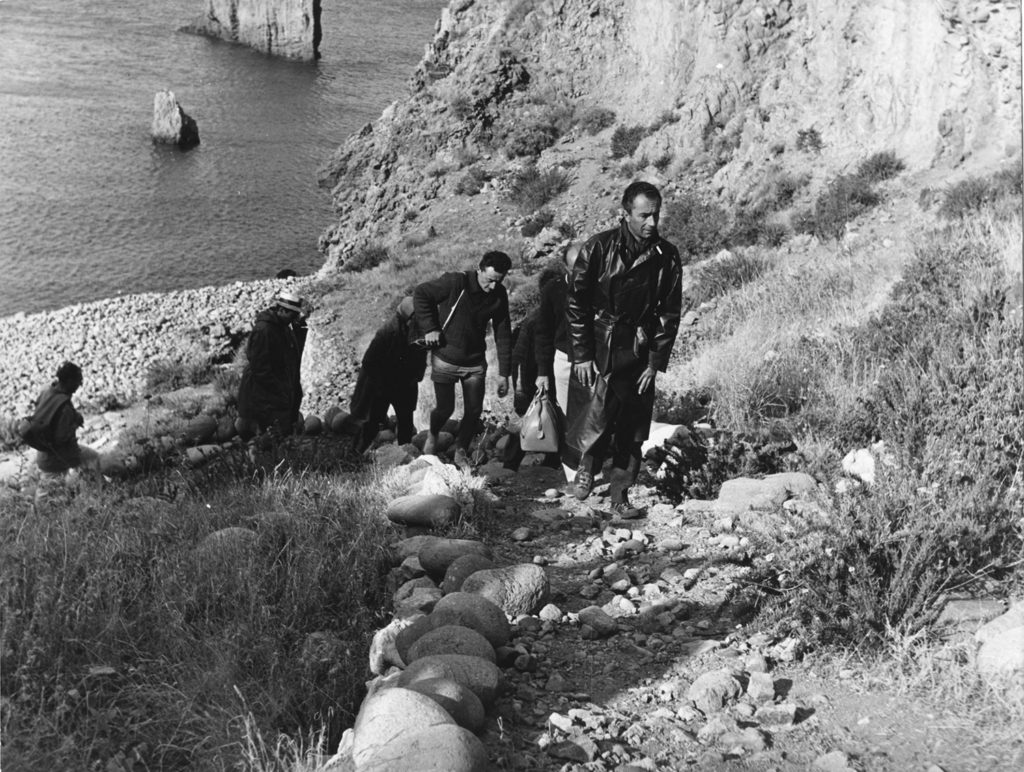
Yet the extremely studied composition of his framing shots, the frequent allusions to the visual arts (from Art Informel to Giorgio Morandi’s still lifes by way of architectural modernism) and the mimicry-gestural rhetoric of the female characters endow the films of the tetralogy with a stylised and artificial character, revealing a “formalistic view of the world” (Pier Paolo Pasolini). This was fully manifested in his first colour film, Il deserto rosso, where the director went so far as to repaint part of the locations (objects, house walls and even the trees of a forest) to serve the purposes of the filming.
In the late 1960s, the end of Antonioni’s association with Monica Vitti marked the start of a new creative season, notable for abandoning the Italian characters and settings typical of his earlier output and the choice of locations abroad: London for Blow Up (1966), the United States for Zabriskie Point (1970), Spain, North Africa, Germany and England for The Passenger (1975), the most international of his films. The occasion was a contract with Metro-Goldwyn-Mayer and the producer Carlo Ponti that enabled him to get bigger budgets than in the past and to hire British and American actors such as David Hemmings, Vanessa Redgrave and Jack Nicholson.
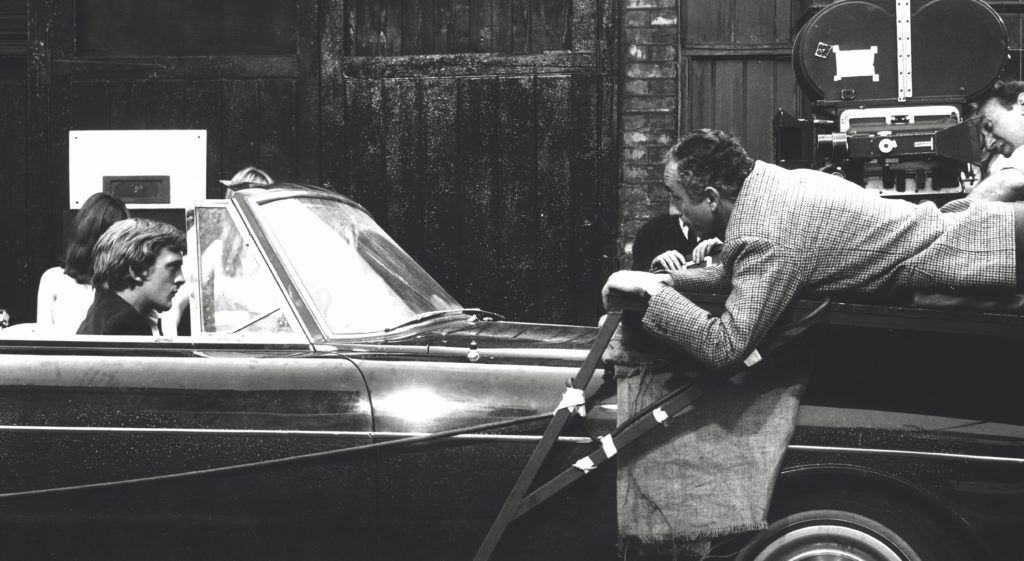
If the previous cycle clearly favoured female figures, now the focus was on the misadventures of a male character, passing through a time of crisis and uncertainty: a fashion photographer who sees his own certainties about reality and the image slowly crumbling; an university student accused of killing a policeman and escaping capture aboard a small plane; a dissatisfied and depressed reporter who assumes the identity of a dead man and ends up being killed. This new trilogy is linked to the previous works by the presence of landscape, which becomes predominant in Zabriskie Point and The Passenger. At the same time, Antonioni renewed and “internationalised” his own style through an encounter with the Anglo-Saxon youth counterculture of the late 1960s, for which he felt a strong fascination. Thus Blow Up owed part of its success to embodying the climate of swinging London, offering one of the most captivating cinematic records of it through fashion, music and the visual arts; while Zabriskie Point echoes Easy Rider (1969) in the use of rock songs as a soundtrack, in a sense attaining a compromise between the aesthetics of New Hollywood and Antonionian formalism. To a separate class belongs the long reportage Chung Kuo, Cina (1972), produced by RAI, the Italian national public broadcasting. This was the director’s most demanding documentary. Initially encouraged by the Communist government, which for the first time allowed a Western troupe access to the country, the film was then banned by the authorities for its alleged “anti-Chinese” content.
The end of Antonioni’s relationship with the MGM marked the start of a long absence from the scenes. During this time Antonioni devoted himself to literature, writing the short stories in the collection Quel bowling sul Tevere (That Bowling Alley on the Tiber, 1983), and the visual arts. He also continued to work on his Enchanted Mountains, almost abstract landscapes created in mixed media and then photographed, which would be exhibited in Venice in 1983. The first work that appeared after the period of silence, Il mistero di Oberwald (The Mystery of Oberwald, 1980), was an experimental film produced by the Italian national broadcast and shot entirely on magnetic tape. It astonished the critics by the absence of the typical contemporary settings of his previous works. (Based on Cocteau’s L’Aigle à deux têtes, it was his only period drama film.)
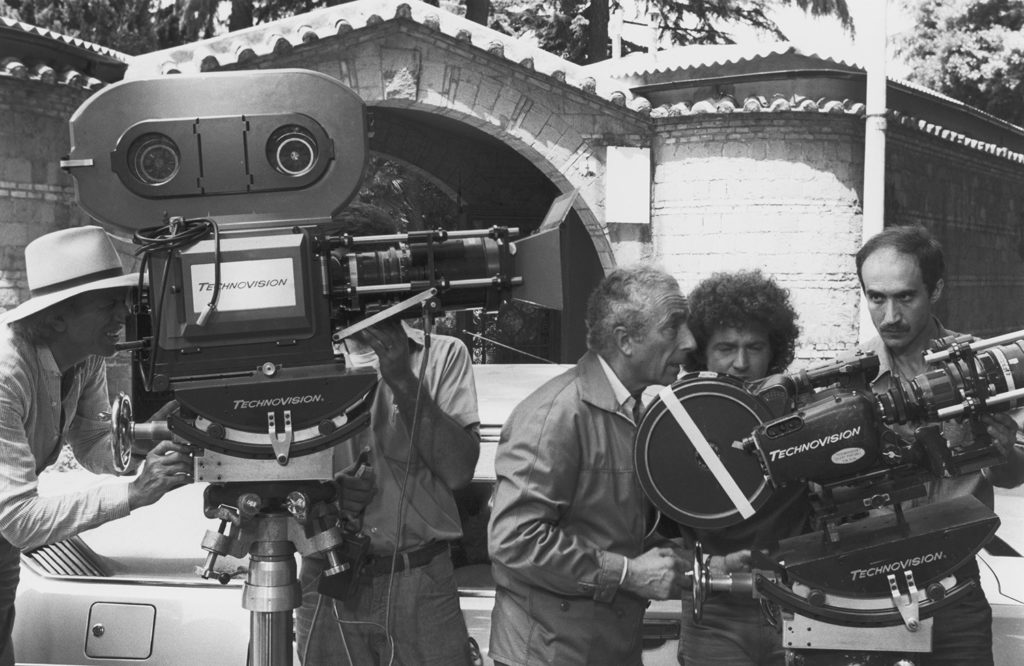
Much admired in France, Identificazione di una donna (Identification of a Woman, 1982) marked a return to situations more in keeping with his poetic. The Italian setting takes us back to the masterpieces of the early 1960s, while the centrality of the male protagonist, a film director in crisis, relates the film to Blow Up and The Passenger). On the other hand, the importance attributed to eroticism, far more explicit than in previous works, was wholly new.
In 1985, while working on several scripts, including a film called La ciurma, Antonioni had a stroke that left him partially paralysed and deprived him of speech, interrupting his career. The same year the director married Enrica Fico, with whom he had a long-standing relationship. After a decade of almost complete inactivity, Antonioni returned to moviemaking to direct his last feature film, Al di là delle nuvole (Beyond the Clouds, 1995). The same year he vas given the honorary Academy Award. Partly shot in Ferrara in collaboration with his German colleague Wim Wenders, Beyond the clouds is based on some of the stories published in Quel bowling sul Tevere, focusing on his customary theme of couples. It confirms the centrality of eroticism – here expressed in the degree to which the camera dwells on the bodies of the young actors – as a distinctive quality of the works of his late maturity, connecting Al di là delle nuvole to the previous Identificazione di una donna and the subsequent The Dangerous Thread of Things, an episode in an anthology film significantly entitled Eros (2004), which concluded his career. Antonioni would die on 30 July 2007 at his home in Rome.